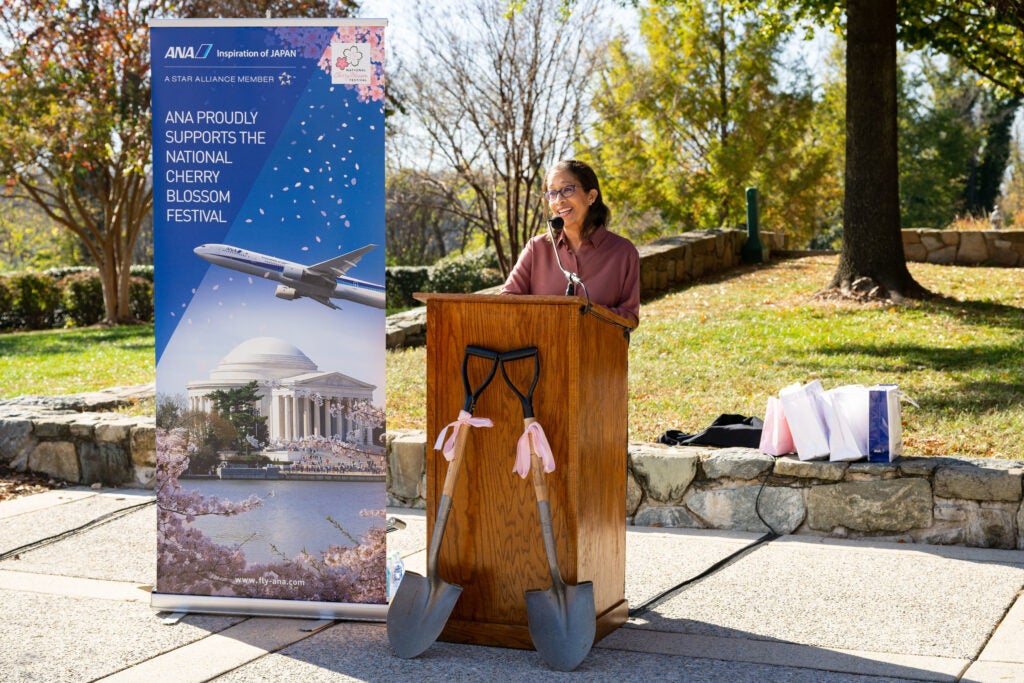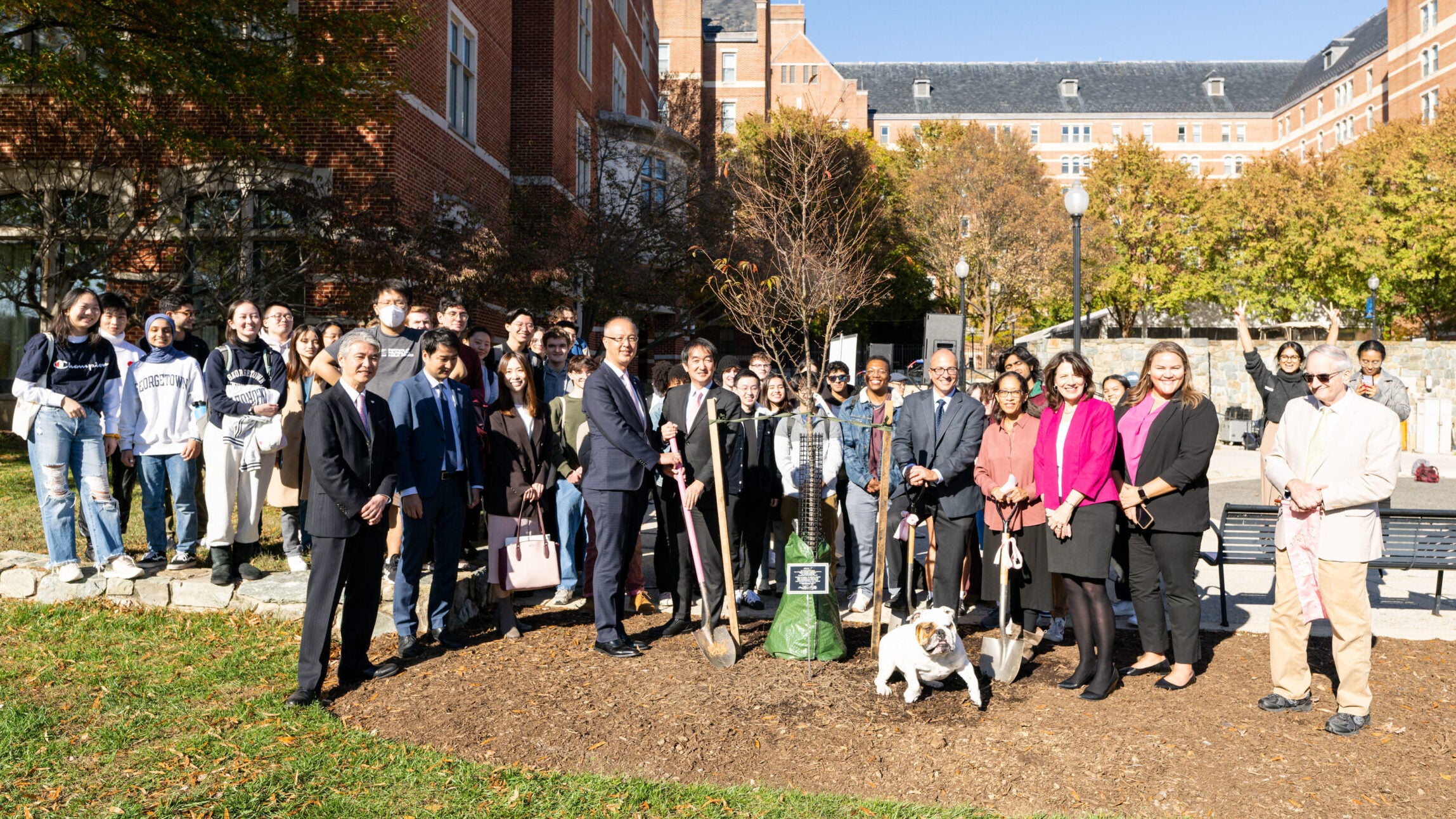All Nippon Airways Donates Cherry Trees to the Hilltop
All Nippon Airways (ANA), Japan’s largest airline, donated six cherry trees that were planted on Georgetown’s campus last week. Situated in front of the Jesuit Residence, the trees will beautify the Hilltop for decades to come.
“We at Georgetown University are so fortunate to be the recipients of these beautiful gifts,” said Rosario Ceballo, Dean of Georgetown College of Arts & Sciences. “We are especially proud that Georgetown’s campus on the Hilltop will be further linked to the broader DC region and the country of Japan through the planting of these trees.”

Dean Rosario Ceballo speaks to the assembled students and guests.
The history of cherry trees in Washington, DC goes back more than a century. Between 1909 and 1912, the mayor of Tokyo, Yukio Ozaki, facilitated the donation of more than 5,000 cherry trees, which were warmly received by President William Howard Taft and First Lady Helen “Nellie” Taft. Today, the blossoming cherry trees attract some 1.5 million annual visitors.
“This shows the special relationship and friendship between the United States and Japan,” said Toshio Nomura, General Manager of The Americas for ANA. “We are very much honored to take part in and sponsor this event.”
In recent years, the National Cherry Blossom Festival has worked to plant cherry trees beyond the Tidal Basin, reducing the ecological impact visitors have on the area. The six trees planted on Georgetown’s campus bring the total number of new trees planted by ANA in the past five years to 100.
“Our campus is an arboretum of sorts – we have dozens of species of trees – and our landscaping has been cultivated to offer a habitat to a wide variety of wildlife, especially butterflies and songbirds,” Dean Ceballo said. “These trees will be a striking new addition to our green spaces.”
Students and faculty had the opportunity to meet with prominent guests to Georgetown’s campus, including representatives from ANA, the National Cherry Blossom Festival and Mr. Koichi Ai from the Embassy of Japan. While the trees won’t bloom until spring, their planting brings the promise of a beautiful future.
“Blossoming cherry trees are undeniably graceful and beautiful but at least to many Japanese they also symbolize and evoke Mono no aware (物の哀れ), literally “the pathos of things,” which includes an awareness of their impermanence or transitory nature,” said Philip Ivanhow, Professor and Chair of East Asian Languages and Cultures. “I think we all gain some inkling of this attitude toward the world in the moment when we see the beautiful blossoms carried away by the wind and scattering away.”
